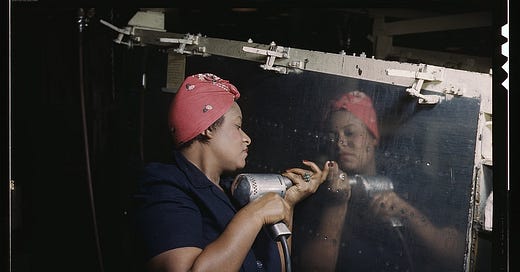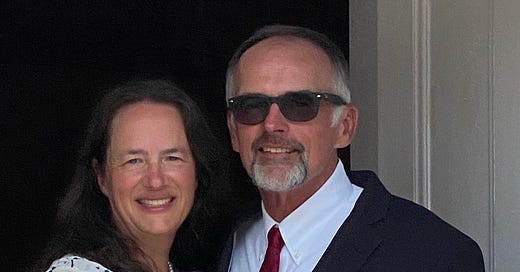
On June 13, 1942, President Franklin D. Roosevelt issued Executive Order 9182, consolidating a number of different government information offices into the Office of War Information (OWI). The mission of the new agency was to gather public information and to spread it across the U.S. and abroad through the press, radio, motion pictures, and other media. Its aim, in the middle of World War II, was to develop “an informed and intelligent understanding, at home and abroad, of the status and progress of the war effort and of the war policies, activities, and aims of the Government.”
The United States had experimented with a government information bureau during World War I. After the U.S. declared war on Germany on April 6, 1917, the Secretaries of State, War, and the Navy asked the president to create a Committee on Public Information (CPI) to unify Americans behind the war. They had watched as artists whipped up enthusiasm for enlisting to fight the Germans as early as 1915, with the sinking of the Lusitania, and wanted to create a similar shared experience over the war itself.
On April 13, 1917, President Woodrow Wilson created the committee through an executive order, then put newspaperman George Creel in charge of it. Creel had organized a committee of friendly newspapermen to promote Wilson's reelection in 1916. Strongly opposed to the idea of government censorship during the war, he instead promised to create an agency that, as he later wrote, would use “every possible media…to drive home the justice of America’s cause. Not to combat prejudices and disaffection at home was to weaken the firing line.” The CPI set out to reach every person in the U.S. by flooding the media zone with pamphlets, newspapers, posters, films, and short speeches given by so-called Four Minute Men, local figures who embellished talking points handed out by the CPI.
In 1940 the Council on Foreign Relations, a nonpartisan foreign relations think tank in New York City that had grown out of Wilson’s internationalism, published a book by Harold Tobin and Percy Bidwell titled Mobilizing Civilian America. It set out plans for putting the nation’s manufacturing and military on a war footing. It also noted that in the modern world, in which war was often about domestic production as much as numbers of troops, “victory may depend not so much on the skill of generals or the fighting quality of their troops, as on the loyalty and stamina of the men and women on the home front.”
With that in mind, the authors examined the Committee on Public Information and concluded that while the committee had done brilliantly at informing the public of the facts, the Four Minute Men and other local writers during World War I had spread “hysterical and fanatical outbursts,” sometimes in connection with bond drives, that had whipped up communities against their foreign-born neighbors and other alleged “spies in our midst.” After the war, Americans were so disgusted by their own campaign of hatred and violence against German-Americans, the authors wrote, that they were hugely resistant to anything they saw as propaganda.
Nonetheless, the authors said, if the U.S. got involved in another war, the government must be prepared for a public relations campaign. In such a case, they said, it was crucial for the government to make sure it stuck firmly to the truth and did not permit the kind of freelancers whose extreme rhetoric had hurt the CPI.
That advice seemed prescient in the months after the bombing of Pearl Harbor ushered the U.S. into World War II. Information came from different departments and bureaus, but no one seemed to be explaining what America’s goals were or what it was doing to achieve them. FDR was reluctant to set up an agency that his political opponents would charge was a propaganda outlet, but gradually he greenlit small agencies to explain the war to the country.
In June 1942, FDR pulled those agencies together as the Office of War Information, putting popular news commentator Elmer Davis in charge. Davis vowed to focus not on building morale but on delivering news that would enable people to understand what was at stake. OWI officials were chagrined to learn that in summer 1942 almost a third of Americans said they did not know what the country was fighting for, while Representative Joe Starnes (D-AL), for example, complained, “I think it is an insult to the intelligence of the American people to say that we do not know why we are fighting.”
In the three years it operated, the Office of War Information created radio programs that explained to Americans which nations were at war and why and others that portrayed life on the home front, and film documentaries about Japanese American incarceration, military training, and so on. Overseas, the OWI established the Voice of America, which is still the official U.S. international broadcasting service, as well as running secret radio stations and disseminating propaganda to harass enemy forces in combat zones. The OWI also examined scripts for Hollywood movies—1,652 of them before the war ended—to make sure they supported the Allies’ mission.
The OWI ran into trouble quickly as reporters determined to explain facts were overridden by advertising men who wanted to sell the war with positive stories, and both were often tripped up by military leaders who withheld information, especially negative stories, for “public safety.” By 1944, OWI operated mostly overseas, as FDR’s opponents insisted its domestic efforts were designed to help him politically. In September 1945, with the war over, president Harry Truman ended the OWI by executive order after congratulating it for its “outstanding contribution to victory.”
In the years to come, especially after the government’s disinformation regarding the Vietnam War, the idea of government propaganda fell into even more disrepute in the United States than it had in the aftermath of World War II, as the excesses possible under someone like the chief propagandist for Germany’s Nazi Party, Joseph Goebbels, became clear.
But we have been far less guarded against the ways in which other actors shape public opinion.
In February, cyber experts said that Russia was already spreading disinformation to influence the 2024 election, and in April, Senator Mark Warner (D-VA), the chair of the Senate Intelligence Committee, warned that the U.S. is more susceptible to Russian influence operations than it has ever been, despite the understanding of the importance of Russian influence operations on the 2016 election. “With polarization in this country, and the lack of faith in institutions, people will believe anything or not believe things that come from what used to be viewed as trusted sources of information,” Warner told Julian E. Barnes of the New York Times. “So there’s a much greater willingness to accept conspiracy theories.”
Also in April, Microsoft said it had uncovered fake social media profiles run by Chinese operatives to destabilize U.S. politics, and in May, TikTok said it took down thousands of accounts from fifteen covert influence operations in the first four months of 2024. Last week, NewsGuard reported on a network of 167 Russian disinformation sites fronted by a former deputy sheriff from Florida.
On June 6 the State Department’s top official on digital and cyber policy, Nate Fick, told an audience: “I don’t think most American citizens really viscerally understand how much of the content they see on social platforms is actually a foreign intelligence operation…. I just don’t think we viscerally get how much of what we see is bot-generated or foreign intelligence service–generated.”
Today, officials from the Office of the Director of National Intelligence (ODNI) told lawmakers that Russian influence operations aimed at undermining support for Ukraine and faith in democratic institutions provide the top threat to the upcoming U.S. election. China is the second-greatest threat but is more cautious because it is concerned about U.S. blowback, while the third, Iran, acts primarily as a “chaos agent,” trying to confuse voters. The ODNI officials said they have been issuing warnings to political candidates, government officials, and others targeted by foreign groups.
Senator Angus King (I-ME) urged Director of National Intelligence Avril Haines to make threats known to the public. “I’m worried that you may be overly concerned with appearing partisan and that that will freeze you in terms of taking the actions that are necessary,” he said. “Please ramp it up. We’ve got about six months and...we know that these adversaries are going to be coming at us.”
The modern propaganda flooding the U.S. portrays us as bitterly divided along lines of race and gender, religion and ethnicity. In contrast to this version of America is the one portrayed during World War II by the OWI documentary photography unit. Photographers who had been moved into the agency from the Farm Security Administration documented war work, women in the factories, and civil rights struggles, including those of the incarcerated Japanese Americans as well as Black and brown Americans, showing them at work or in their small towns or cities. The images were of ordinary Americans, often singled out as heroic individuals in their own frames, to represent the American people as a whole.
And these images were some of the most lasting and vital elements of the OWI’s work. If the hero of the military was the ordinary soldier, the G.I., as newspaper reporters wrote, the hero of the home front was the ordinary American who, in order to make sure that the G.I. had supplies, went to work in a factory or on a farm.
That image was central to the shaping of postwar America.
[Alfred T. Palmer, Operating a hand drill at Vultee-Nashville, woman is working on a "Vengeance" dive bomber, Tennessee, 1943, Farm Security Administration/Office of War Information Color Photographs, Library of Congress]
Notes:
George Creel, Rebel at Large: Recollections of Fifty Crowded Years (1947), at https://babel.hathitrust.org/cgi/pt?id=mdp.39015028548579&seq=171
https://archive.org/details/ldpd_11345811_000/page/18/mode/2up
https://www.cfr.org/sites/default/files/pdf/cfrcentennialbook.pdf
https://www.loc.gov/item/today-in-history/june-13
https://www.nytimes.com/2024/04/16/us/politics/election-interference-russia-warner.html
https://www.newsguardtech.com/special-reports/john-mark-dougan-russian-disinformation-network/
https://www.archives.gov/publications/prologue/2015/fall/united-newsreels.html
https://www.washingtonpost.com/technology/2024/05/23/tiktok-transparency-report-china/
Sydney Weinberg, “What to Tell America: The Writers’ Quarrel in the Office of War Information,” Journal of American History (June 1968): 73–89.












"Donald Trump is their [Russian propagandists] favorite weapon against America. Trump is described as a friend and ally, "our Trumpushka" and "Donald Fredovych." Out of office, he is described as Russia's great hope. He is "sorely missed"; Russia is "ready to elect you again". Russia propagandists had no trouble predicting that Trump would try a coup when he lost in 2020, because that is a familiar sort of behavior to them. They rejoiced when he did , because they thought that this could lead to a civil war in the United States. Their coverage of Trump's coup attempt was at first highly positive. When it failed, a very awkward pivot was made to the position that it had all been some sort of provocation by the Democrats.
One of the things that Russian propagandists expect not to be noticed, but which is brought home in the book [Julia Davis's new book on Russian television propagandists, In Their Own Words] , is that they believe that Trump is an idiot. Of course, it's hard to see, from their perspective, how they can believe anything else (except, perhaps, that he is a traitor, as is also sometimes hinted). In their public worldview, destroying the United States is the main aim, and here is an American who follows their talking points."
- Timothy Snyder
In 1917, my 7 year old father had a dog, a Dachshund, for a pet. It was named "Kaiser." That summer, his father told him the dog's name was now "Teddy," and that he must be out in the yard with Teddy when he had to do his business, because being a Dachshund had become dangerous, since "patriots" thought they were supporting the war when they killed "German" dogs.
In 1918, my 4 year old mother, whose family name was Weist, was woken by her parents one morning because the barn of their farm outside Alamosa, Colorado, was on fire - it burned to the ground, killing all their livestock. The arsonist(s) were never found. Ironically, the first "Weist" of the family in America was her grandfather, Dr. Frederick Weist, a professor of humanities at the University of Frankfurt and a member of the Congress of Frankfurt in the 1848 revolution against Prussian rule. He arrived in the United States with a Prussian price on his head for his anti-Prussian activities.
Two of the many reasons I have never liked "narrow-minded Southern bigot" (in the words of those who knew him) Woodrow Fucking Wilson., the greatest hypocrite to ever occupy the White House and the most over-rated president ever. The Unreconstructed Confederate who nationalized Jim Crow.